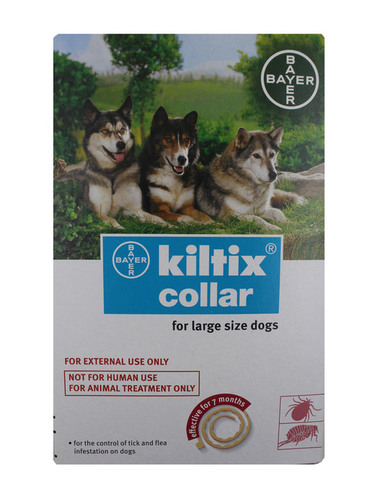

Two days after treatment, 49 (60.5%) and 9 (11.7%) dogs were still infested by live ticks and fleas, respectively. In addition, some of the flea infested dogs (18.9%) were presenting signs of flea allergic dermatitis (FAD). Tick infested dogs had an estimated mean intensity of 46.9 (± 65.7), while flea infested animals had a load between 20 and 50 fleas. RESULTS: At the time of treatment 79 (96.3%) out of 82 included dogs were heavily infested by ticks and 53 (68.8%) out of the 77 combed dogs were infested by fleas. Furthermore, dogs were examined for ectoparasites whilst replacing collars 8 months after their application. Dogs were followed-up for ectoparasite presence after 2, 7 and 14 days and thereafter biweekly up to 90 days. METHODS: A total of 82 dogs were collared with slow release collars containing a formulation of imidacloprid 10% / flumethrin 4.5%. This paper reports on the efficacy of imidacloprid/flumethrin slow release collars to cure dogs highly infested with ectoparasites and to prevent infestations for 8 months in a refuge with a history of unsuccessful environmental treatments. In spite of the indubitable efficacy of several topical ectoparasiticides registered for the control of ectoparasites in dogs, the short period of action and the price of these products limit their use in dog communities. N2 - BACKGROUND: Dog communities living in kennels are at high risk of being infected by ticks and fleas. Lastly, keeping dogs indoors from dusk to dawn, when female sand flies are questing for blood meals during high-risk seasons, is also important to prevent infection (Miro et al., 2017).T1 - Efficacy of a combination of 10% imidacloprid and 4.5% flumethrin (Seresto®) in slow release collars to control ticks and fleas in highly infested dog communities. Use of residual insecticides or permethrin-treated screens in dwellings and surrounding areas in hyperendemic regions can also serve to reduce the number of infectious bites. In addition, removal of sand fly breeding locations (e.g., compost, pruning scraps, bins, and woodpiles), and favourable areas close to inhabited zones, is important to decrease the risk of sand fly bite.
FLUMETHRIN DOGS WINDOWS
These include protecting windows and doors of homes, shelters, or dog kennels using mesh with size ranging between 0.3 and 0.4mm2. and development of clinical disease ( Environmental vector-controlĪdditional measures exist beyond topical treatment to control and reduce sand fly numbers in the dogs’ environment. In endemic areas a multimodal approach combining the use of repellents and vaccination should be considered for an optimal prevention against infection with Leishmania spp. There are two different active ingredients used in collars which show repellent efficacy against sand flies: deltamethrin and flumethrin. Formulations with permethrin have a repellent and killing effect and prevents biting of sand flies. The application of repellent (anti-feeding) treatments is proven to be highly effective against sand flies. Additionally, vaccination should be considered as a multimodal approach ( Different applications are available: Prevention of canine leishmaniosis should include the application of a long-acting topical insecticide throughout the period of sand fly activity. This killing effect identifies the insecticidal efficacy, while the ability to ward off sand flies is a combination of contact repellency and anti-feeding effect (Miro et al., 2017). These formulations have the dual effect of both warding off and killing sand flies when they contact a protected dog. Consequently, the main way to avoid Leishmania infection is to use topical insecticides with proven activity for bite prevention.

to dogs occurs immediately after sand fly bite. Transmission of metacyclic promastigotes of Leishmania spp.


 0 kommentar(er)
0 kommentar(er)
